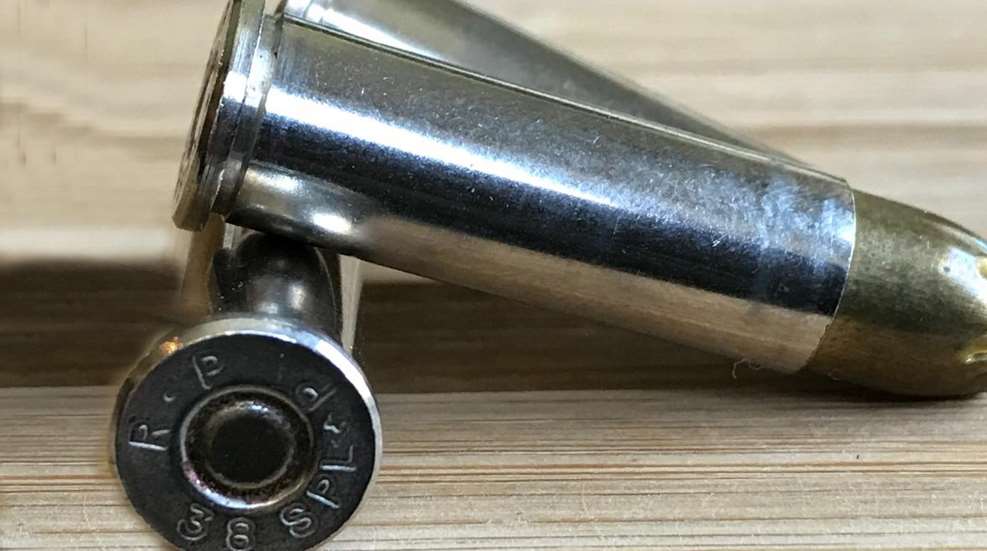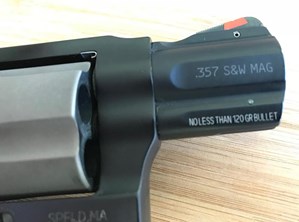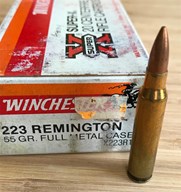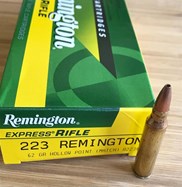
Choosing the right ammunition can be overwhelming and intimidating to a new firearm owner. Manufacturers produce a variety of different types of ammunition, each varying by load, projectile weight, velocity and charge. Knowing which type of ammo is right for your firearm depends on what you intend to shoot. Whether you are target shooting, training or hunting, your choice of ammo is critical to your shooting proficiency and success.
Understanding terminology and performance is key to matching ammunition to your intended use. Always check your owner’s manual to determine which types of ammo are recommended for your firearm. Learning to decipher the numbers, fractions and measurements on a box of ammunition is the first step.
Rifle and Handgun Cartridges
Caliber
Measurement for rifle and handgun ammunition developed in the United States is commonly identified by a decimal point representing hundredths of an inch. For example, if a bullet has a 0.38-inch diameter, it is called a .38-caliber bullet. (When saying the name, the decimal is left out, calling this a “38”). Bullet calibers can be shown as two decimal points such as a .44 and .45; .and three decimal points like .222, .223 and .357. The other measurement system (metric) used for bullet width is millimeters, displayed as a whole number such as 9 mm or 10 mm.
The caliber of rifles is the inside diameter of the barrel before the rifling has been cut, or the distance between land to opposite land. Caliber is usually measured in hundredths of an inch, thousandths of an inch, or in millimeters. For example, a .22-caliber barrel measures 22/100 of an inch in diameter. A .270-caliber rifle bore measures 270/1000ths of an inch in diameter between the lands and has a larger bore diameter than a .223-caliber rifle. Caliber descriptions sometimes have a second number that has nothing to do with the diameter. For example, a .30-30 is a .30-caliber cartridge, but the second number is a remnant from the days when the cartridge took 30 grains of powder. The “06” in .30-06 refers to the year 1906, when it became the official ammunition of the U.S. military.

Just as the caliber numbers on ammunition must match the data stamp, the same goes for the manufacturer’s name. For example, a rifle chambered for .300 Win (Win for “Winchester”) Mag cannot be fired out of a rifle chambered for .300 Weatherby Mag. However, a rifle chambered for .30-.30 Win can be safely fired out of a Marlin Firearm chambered for .30-.30 Win. A pistol chambered for .40 S&W (S&W for “Smith & Wesson”) can be safely fired out of a Glock pistol chambered for .40 S&W. Any manufacturer can produce firearms that fire another manufacturer’s branded ammunition, as long as that caliber designation is stamped on the barrel exactly as it was named.
Bullet Weight
Bullet weight is usually characterized in grains. 437.5 grains equal one ounce, and the larger the number of grains listed on the box, the heavier the bullet will be. The weight of the bullet (heavy or light) changes how the ammunition performs. Many calibers are offered in different grains or weights designed for specific purposes. For example—ammunition for a rifle chambered for .30-.30 Win can come in the weights of 150 grains or 170 grains. This is important to know for accuracy. A .30-.30 Win rifle sighted in for a 150-gr. bullet will not be zeroed in if 170-gr. ammunition is used.
Bullet Types
The shape of a bullet and what it is made of affects how it performs when fired and upon impact of a target. Manufacturers continually develop new styles, but some of the more common abbreviations are listed below:

Full metal jacket (FMJ)—a lead bullet wrapped or “jacketed” with copper or steel alloy coating on the bullet to reduce lead residue left in the barrel after firing. These bullets are commonly used for target practice. When the bullet hits the target, it will usually pass right through, and not fully expand upon impact.

Jacketed Hollow Point (JHP)—The type of bullet has a jacketed cover over a lead core similar to FMJ except that it stops short of the top exposing a lead hollowed out center.
Hollow point (HP)—a bullet that has a hollowed-out center. When a hollow point strikes a target, the bullet deforms quickly, resembling a mushroom of lead.
Over-pressurized Ammunition (+P)—ammunition made with a higher pressure than the typical rounds of its caliber. The result is faster muzzle velocity and greater penetration.

Soft Point (SP)—In SP bullets, the bullet has a small portion of exposed lead. This causes it to expand upon impact.
Jacketed Soft Point (JSP)—In JSP bullets, the sides of the bullet are jacketed in copper; the lead nose is left exposed in order to allow the bullet to expand when it hits the target. The JSP ammunition is generally used for hunting.

Semi-Jacketed Hollow Point (SJHP)—SJHP is similar to a JHP, with an opening or hollowed out center but the jacket stops about a ¼” from the top. These bullets expand rapidly and are commonly used for hunting.
There are countless choices of ammunition. It is critical to identify which ammunition is the correct type for the firearm you will be shooting BEFORE you shoot. When in doubt, ask a reputable gun store employee or a qualified gunsmith. Make sure you are following the 10 Rules of Ammunition Safety:
- ALWAYS identify the data stamp indicating the specific caliber or gauge marked on the side of the barrel
- ALWAYS read the package label of the ammunition to ensure it matches the label’s information to the specific caliber or gauge marked on the side of the barrel.
- ALWAYS read the ammunition box carefully for information related to accuracy and performance (e.g., Bullet weights in grains, +P).
- ALWAYS match the data stamp on the bottom of each handgun or rifle cartridge on the brass, to ensure that it matches the specific caliber marked on the side of the barrel.
- ALWAYS match the bullet type to the shooting activity and intended target.
- ALWAYS understand how far your projectile can travel before you take a shot.
- ALWAYS know what is in front of and beyond your target, in the path of your bullet.
- ALWAYS transport your ammunition separate from your firearm
- ALWAYS store your ammunition in a locked location, separate from your firearms
- When in doubt, ALWAYS ask a gunsmith or someone with experience in firearms and ammunition.
Remember, safety is everyone’s responsibility. Firearms are not the only aspect of gun ownership that demands safety. Failure to understand all the safety rules of gun ownership can lead to accidents and has the potential of affecting everyone through loss of Second Amendment Rights. Every gun owner should take an NRA Firearms Training Course, regardless of his or her experience.














































